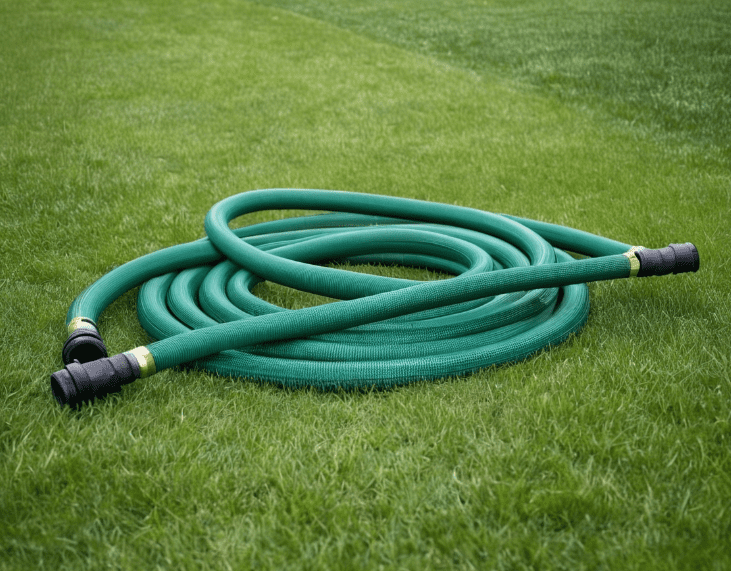
Soaker Hose: The Efficient Watering Solution for Your Garden. A soaker hose is a porous garden hose designed to slowly release water along its entire length, providing efficient and targeted irrigation directly to plant roots. Made from recycled materials like rubber or polyethylene, these hoses feature tiny pores that allow water to seep out gradually, minimizing water waste and promoting healthier plant growth.
How Soaker Hoses Work
Soaker hoses operate on a simple yet effective principle. When connected to a water source, they fill with water and allow it to seep through the porous material slowly. This creates a consistent, gentle flow of water that saturates the soil around plants’ root zones.

Benefits of Using Soaker Hoses
- Water Conservation: Soaker hoses deliver water directly to plant roots, reducing evaporation and runoff compared to traditional sprinklers.
- Time-Saving: Once installed, soaker hoses require minimal attention, allowing gardeners to focus on other tasks.
- Improved Plant Health: By keeping foliage dry, soaker hoses help prevent fungal diseases and promote stronger root growth.
- Versatility: These hoses can be used in various garden layouts, from raised beds to long rows of vegetables or ornamental plants.
- Cost-Effective: While initial setup may require an investment, soaker hoses can lead to significant water savings over time.
Setting Up Your Soaker Hose System
Proper Layout
To maximize the effectiveness of your soaker hose system, follow these guidelines:
- Start with the level ground for even water distribution.
- Place the hose near plant bases, avoiding direct contact with stems.
- Space parallel runs 12-18 inches apart for adequate coverage.
- Use landscape pins to secure the hose in place.
Water Pressure Management
Maintaining appropriate water pressure is crucial for optimal soaker hose performance:
- Use the included restrictor disk at the water source connection.
- Aim for a 10-12 PSI pressure to prevent hose damage and ensure even water distribution.
- For longer runs, consider using a pressure regulator.
Length Limitations
To maintain consistent water flow:
- Limit each soaker hose run to 150 feet or less.
- For larger areas, use multiple water sources or connect hoses in parallel rather than series.
Soaker Hose Maintenance Tips
- Regular Inspection: Check for clogs, kinks, or damage periodically.
- Flushing: Run water through the hose at full pressure occasionally to clear any debris.
- Winter Storage: Drain and store hoses indoors during freezing temperatures.
- UV Protection: Cover hoses with mulch to extend their lifespan.
Soaker Hoses vs. Other Irrigation Methods

Maximizing Soaker Hose Efficiency
- Mulching: Apply a 2-3 inch layer of mulch over the soaker hose to reduce evaporation and protect the hose from UV damage.
- Timers: An automatic timer ensures consistent watering schedules, especially during dry periods.
- Grouping Plants: Arrange plants with similar water needs along the same soaker hose run for more efficient watering.
- Seasonal Adjustments: Modify watering duration and frequency based on rainfall and temperature changes throughout the growing season.
Common Soaker Hose Mistakes to Avoid
- Overwatering: Monitor soil moisture and adjust watering duration to prevent waterlogging.
- Improper Placement: Avoid placing hoses too close to plant stems or too far from root zones.
- Neglecting Maintenance: Regular checks and cleaning can prevent clogs and ensure even water distribution.
- Ignoring Pressure: Excessive water pressure can damage hoses and lead to uneven watering.
Best Soaker Hoses Revealed
1. Water Right 500 Series Soaker Hose
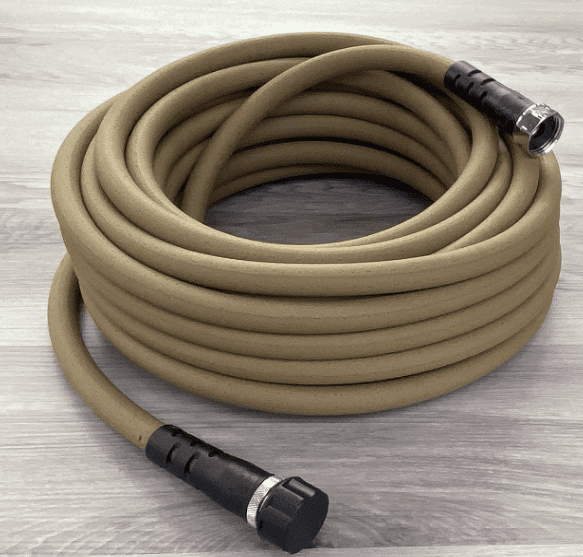
-
- Pros:
- Flexible: The Water Right 500 Series Soaker Hose is highly flexible, making it easy to maneuver around plants and obstacles in your garden.
- Even Water Distribution: It provides consistent water distribution throughout its length, ensuring that your plants receive adequate moisture.
- Durable Materials: Constructed from high-quality polyurethane, this hose is resistant to kinks, cracks, and UV damage.
- Cons:
- Weight: It’s relatively heavy compared to other models, which might be a consideration if you need to move it frequently.
- Price: The Water Right 500 Series Soaker Hose is higher in cost.
- Pros:
Click Here to Buy on Amazon $85.10Buy on Amazon
2. Melnor Flat Soaker Hose
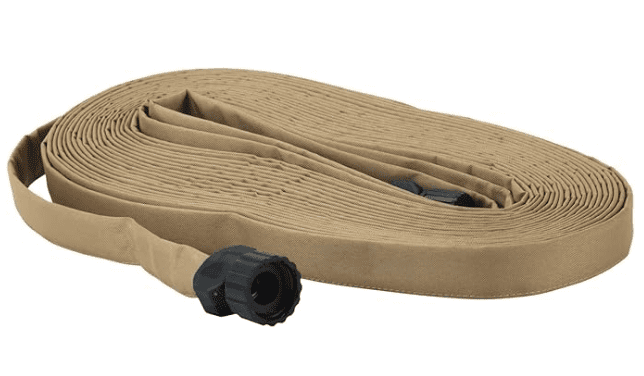
-
- Pros:
- Budget-Friendly: The Melnor Flat Soaker Hose is an affordable option for gardeners on a budget.
- Convenient: Its flat design allows for easy storage and unrolling.
- Cons:
- Durability: While it’s a great budget choice, it may not be as durable as premium hoses.
- Water Pressure: It might not withstand intense water pressure as well as some other models.
- Pros:
Click Here to Buy On Amazon $19.05Buy on Amazon
3. Taisia 1/2-Inch Soaker Hose (Round)
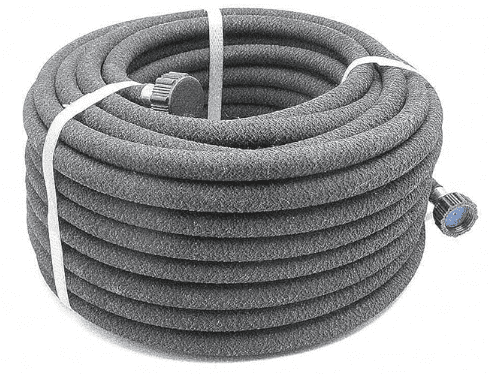
-
- Pros:
- Versatile: The round design suits various garden layouts, including curved or circular beds.
- Even Soaking: It delivers water evenly along its length.
- Cons:
- Bulkier: Round hoses can be bulkier and less compact than flat hoses.
- Storage: Storing it neatly can be a challenge.
- Pros:
Click Here to Buy It on Amazon $43.98Buy on Amazon
4. Gilmour Flat Soaker Hose (Flat)
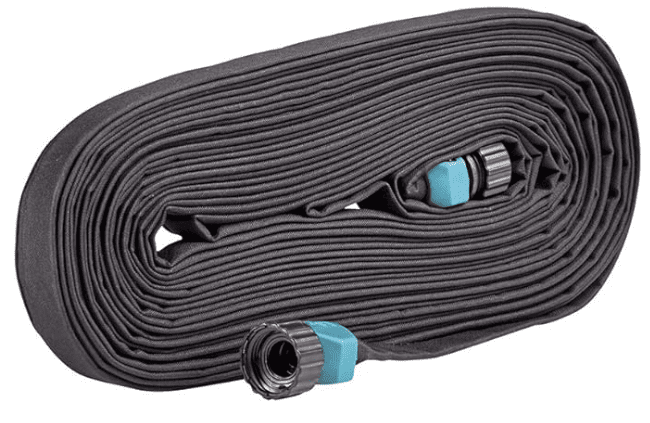
-
- Pros:
- Efficient Water Distribution: The Gilmour Flat Soaker Hose ensures efficient water distribution to your plants.
- Cons:
- Water Pressure Sensitivity: It may not hold well under high pressure.
- Durability: Some users report durability issues over time.
- Pros:
Click Here To Buy It On Amazon $16.99Buy on Amazon
5. Winisok Heavy Duty Sprinkler Soaker Hose (For Foundations)
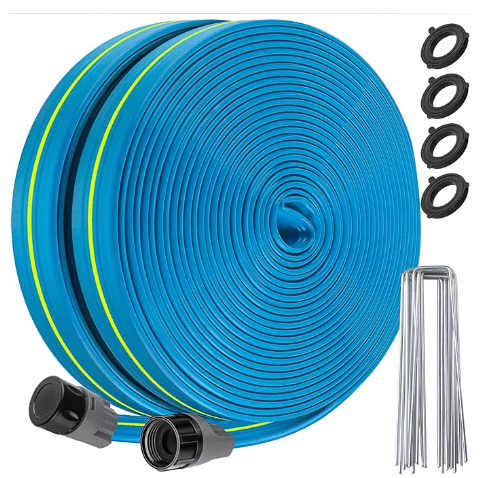
-
- Pros:
- Foundation Watering: Specifically designed for foundation watering, preventing soil erosion around your home.
- Cons:
- Niche Use: While remarkable for its intended purpose, it’s not ideal for general gardening.
- Length Limitation: Available in limited lengths, so consider your foundation layout.
- Pros:
Click Here to Buy It On Amazon $15.99Buy on Amazon
FAQ
How often should I run my soaker hose?
Frequency depends on factors like soil type, climate, and plant needs. Generally, deep watering 1-3 times per week is more effective than daily short sessions.
Can I use soaker hoses for container gardens?
Yes, soaker hoses can be effective for container gardens. Coil the hose around the base of plants in larger containers or use shorter sections for multiple pots.
Are soaker hoses environmentally friendly?
Yes, soaker hoses are often made from recycled materials and promote water conservation through targeted irrigation.
How do I know if my plants are getting enough water from the soaker hose?
Check soil moisture 4-6 inches deep near plant roots. If it feels moist but not waterlogged, your watering is likely adequate.
By implementing a soaker hose system and following these guidelines, you can create an efficient, low-maintenance irrigation solution that promotes healthy plant growth while conserving water.
Whether you’re a seasoned gardener or just starting out, soaker hoses offer a versatile and effective way to keep your garden thriving throughout the growing season.
Last update on 2024-11-12 / Affiliate links / Images from Amazon Product Advertising API



























